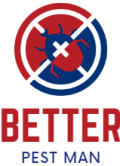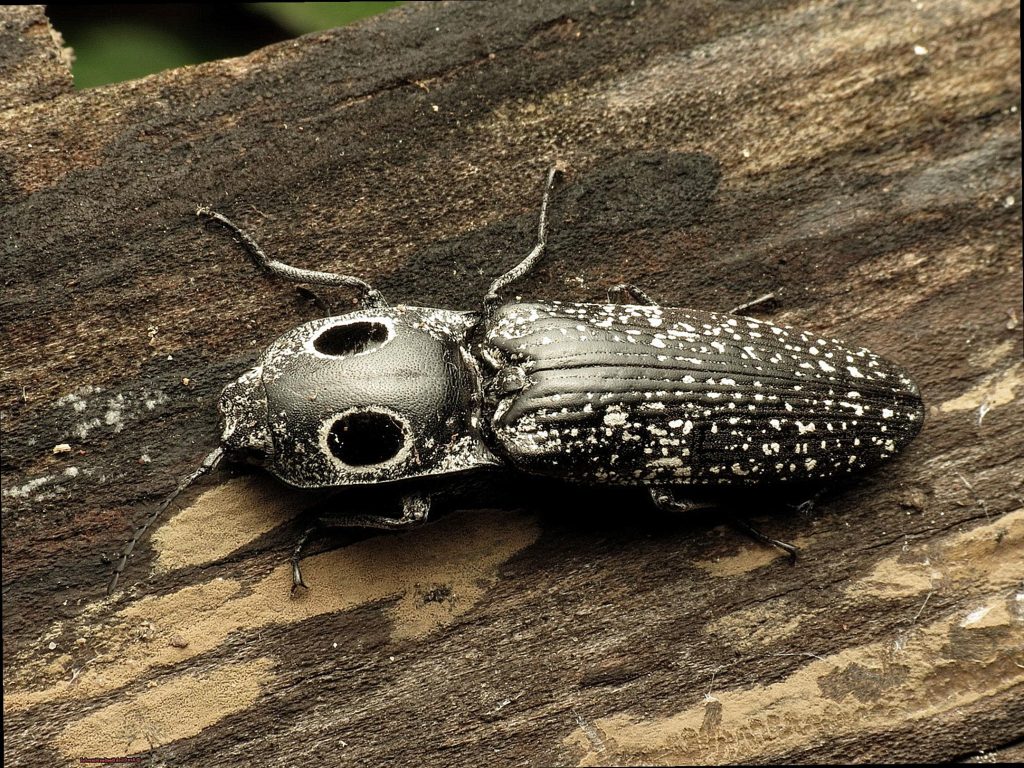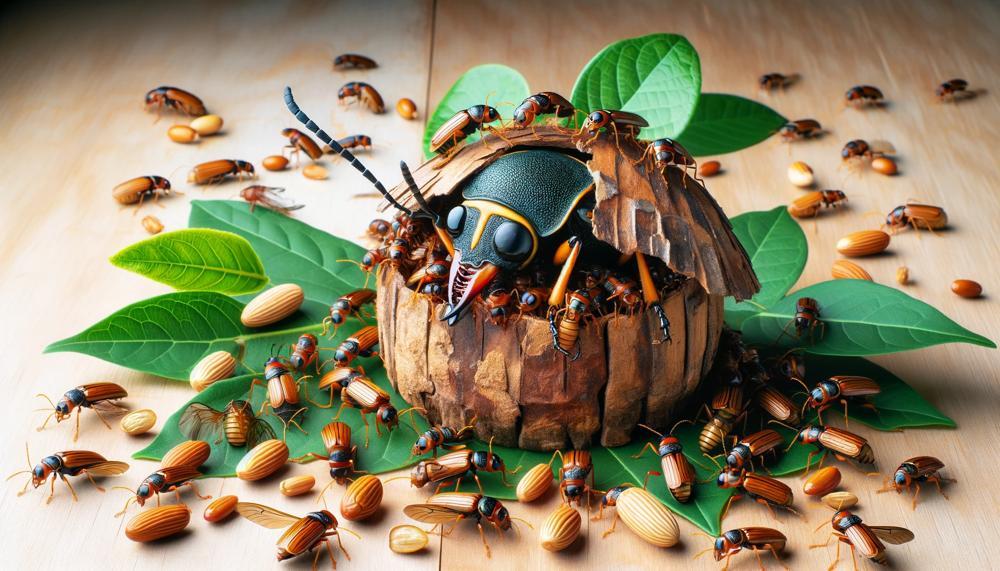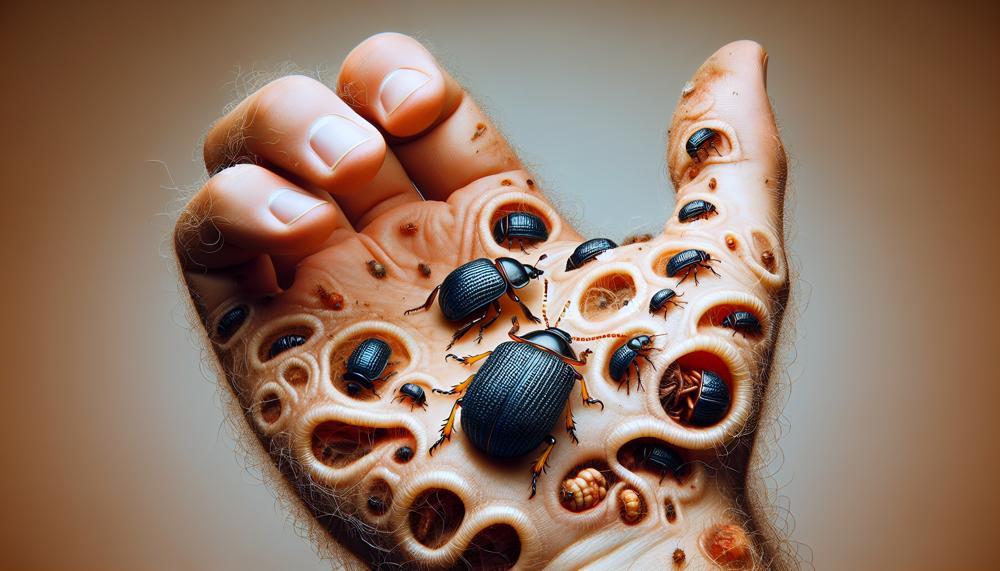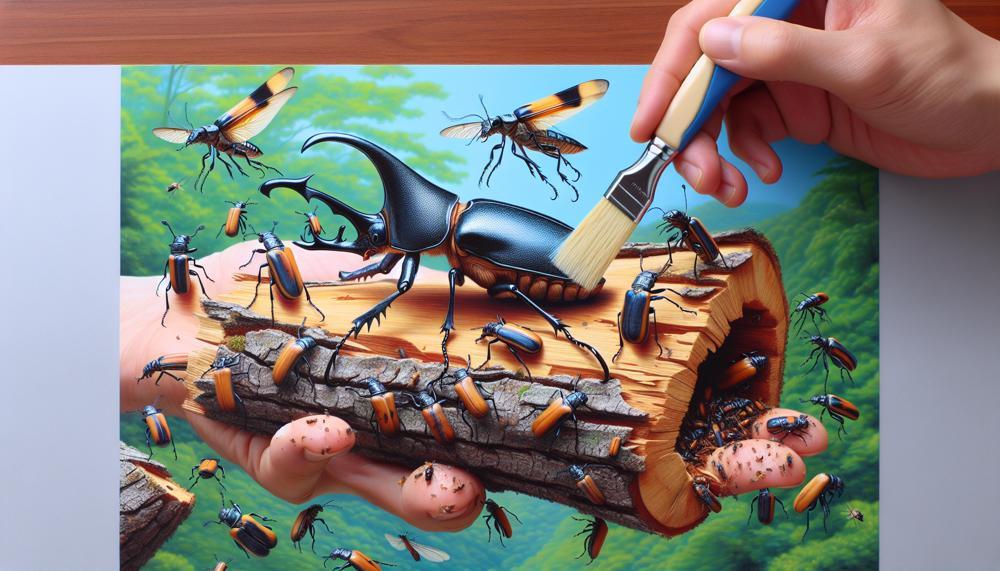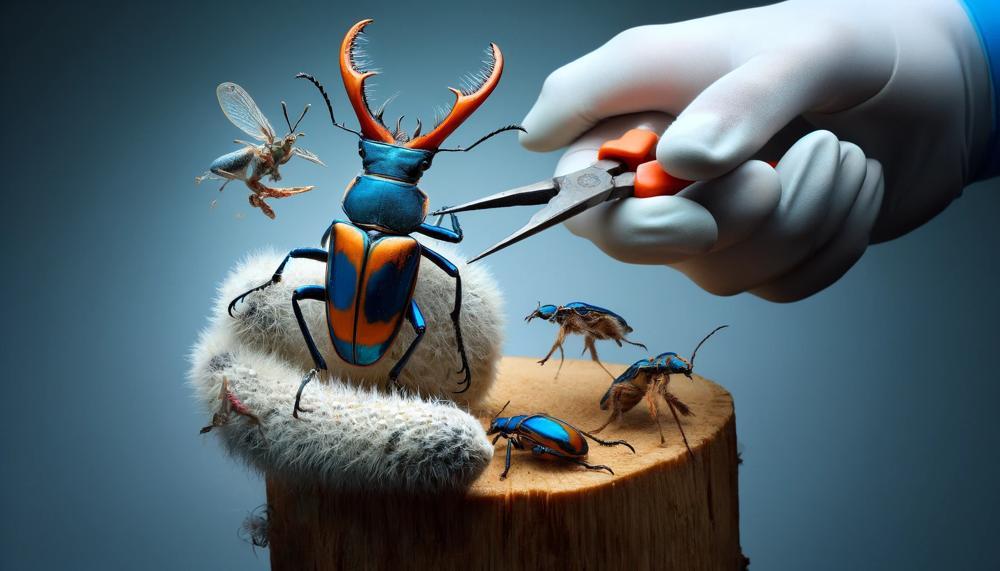Welcome to our blog, where we explore the intricate and often overlooked world of insects.
Today, we’re going to turn our attention to a seemingly harmless creature that may just surprise you with its potential for harm – the click beetle. Don’t let its small size fool you, these tiny creatures possess some impressive abilities that can cause unintended consequences for both our environment and homes.
So, before you take another sip of your drink, let’s delve into the world of click beetles and their not-so-innocent impact.
Table of Contents
Physical Appearance and Behavior
Click beetles, also known as elaters, skipjacks, snapping beetles, or spring beetles, may seem like harmless insects due to their small size and seemingly innocent behavior. However, these tiny creatures possess a unique defense mechanism that sets them apart from other insects – the ability to produce a loud clicking sound that can startle predators and launch them into the air. But what exactly is this mechanism, and how does it benefit click beetles?
Physical Appearance and Behavior:
Click beetles are easily distinguished by their elongated bodies, with some species reaching up to one inch in length. They come in a variety of sizes and colors, with some being large and vibrant while others are small and unassuming. Sporting six legs and a streamlined body shape, they can move swiftly when needed. However, their most noteworthy physical feature is the spine on their prosternum that snaps into a notch on their mesosternum.
Defense Mechanism:
The clicking mechanism of click beetles serves two primary purposes – defense against predators and self-righting. When threatened or disturbed, these ingenious insects will arch their backs and swiftly snap their prosternum into the mesosternum, producing a sharp clicking sound.
This sound can startle predators and provide the beetle with an opportunity to escape. Moreover, the force of the click can also propel the beetle into the air, allowing it to right itself if it happens to be stuck on its back.
Self-Righting:
In addition to being a defensive tactic, the clicking mechanism of click beetles also assists them in self-righting if they find themselves stranded on their backs. This is especially crucial for these ground-dwelling insects as they are at risk of being overturned by obstacles or predators. The force of the click launches the beetle into the air, enabling it to land on its feet and continue its journey.
Conclusion:
In conclusion, click beetles possess an extraordinary and effective mechanism for defense and self-righting. Their ability to produce a loud clicking sound and launch themselves into the air sets them apart from other insects and aids in their survival.
However, it is important to note that while click beetles may not pose a direct threat to humans, they can be detrimental in terms of their impact on crops and their ability to attract predators.
Click Beetles’ Diet and Feeding Habits
Click beetles. These enigmatic creatures have captured the curiosity of many with their intricate patterns and distinct clicking noise. But beyond their mesmerizing appearance lies a diverse diet and unique feeding habits that can have significant economic impacts. As an expert on these fascinating creatures, I am here to unravel the secrets of their diet and share effective management strategies for controlling populations.
Diverse and Adaptable Diet
Click beetles are not picky eaters. They have a wide range of dietary preferences, making them adaptable to different environments. Some species feast on plants, including roots, seeds, and sprouts, while others prefer animal-based diets of beetle grubs and decaying organic material. This diversity in diet can be problematic for crop production and other human activities.
Fascinating Feeding Habits
One of the most intriguing characteristics of click beetles is their ability to make a distinct clicking noise by snapping a structure in their thorax. This serves as a defense mechanism to startle predators or flip themselves over if stuck on their backs. They are also found worldwide and have intricate patterns or glow at night, making them intriguing creatures to observe.
Effective Management Strategies
To control click beetle populations, non-chemical methods such as crop rotation and intercropping can be used. These techniques disrupt their feeding habits and make it difficult for them to thrive in one location. However, in severe cases, pesticides may be necessary.
If pesticide use is deemed necessary, it is crucial to seek professional help to ensure safe and effective application. Pesticides targeted at click beetles should be used with caution to avoid harm to beneficial insects or crops. It is also essential to follow label instructions carefully to prevent any adverse effects.
Preventive measures can also be taken to minimize click beetle infestations. These include reducing outdoor lighting and sealing entry points into homes. Click beetles may also invade homes through cracks or open windows, so it is crucial to seal these entry points to prevent infestations.
Monitoring soil conditions is also crucial in preventing click beetle infestations. Wireworms, the larvae of click beetles, are more likely to infest specific types of soil used for growing certain crops. Seeking professional help can aid in identifying potential infestation risks and implementing preventive measures.
Life Cycle and Reproduction
Have you ever stumbled upon a click beetle during your daily adventures? These intriguing insects have captivated many with their distinct clicking sound, intricate designs, and flexible eating habits.
But have you ever wondered what their life cycle entails or how they reproduce? Let us delve into the world of click beetles and unravel the enigmas of their transformation from egg to adult.
Life Cycle:
The voyage of the click beetle typically begins as a tiny egg laid by a female beetle at the base of host plants. From these eggs hatch larvae, commonly known as wireworms due to their slender, elongated bodies. These larvae nourish themselves on the roots of plants and can take up to five years to fully mature through several molts. Once they reach adulthood, they cocoon in the soil before emerging as adults in the spring.
Ecology:
During the colder months, both adult click beetles and larvae can be found sheltering beneath the ground, protected from the harsh winter weather. When spring arrives, they become active and feed on a variety of plants, with a particular fondness for grasses and umbellifers. This flexibility allows them to thrive in diverse environments, including gardens, fields, and even urban areas.
Reproduction:
One of the most fascinating aspects of click beetles is their ability to flip themselves into the air by snapping their bodies. This behavior plays a crucial role in their reproductive process. Male click beetles use this action to attract females by producing a loud clicking noise that can be heard up to three feet away. Once a suitable partner is found, females lay eggs around host plants, continuing the cycle of life.
Effective Management Strategies:
While click beetles may not pose significant harm to plants, large populations can become a nuisance. To control their numbers, it is essential to identify and eliminate potential breeding sites such as decaying plant matter or debris in the soil. Additionally, utilizing natural predators like birds and beneficial nematodes can help regulate their populations.
In conclusion, the life cycle and reproduction of click beetles are truly captivating. From their lengthy development process to their distinct mating behaviors, these creatures have adjusted to thrive in various habitats.
Are Click Beetles Harmful to Humans?
While click beetles are not typically considered direct pests to humans, there are certain risks to be aware of, particularly for those seeking to rid their homes of pests. In this section, I will share my expertise and experiences to provide you with valuable insights on how to avoid any potential harm from click beetles.
Understanding Click Beetles and Their Behavior
Click beetles belong to the Elateridae family and can be commonly found in gardens, fields, and even inside homes. These small and slender insects possess a unique ability to “click” and jump when they are on their backs, hence earning their name. They are also well-known for their remarkable transformation from tiny eggs to adults, using their impressive flipping technique for reproduction.
While click beetles may seem harmless, they do have certain behaviors that can cause harm to humans. The larvae of click beetles, also known as wireworms, feed on plant roots and can also be found in grains, cereals, and other stored foods. If these contaminated foods are consumed by humans, it can lead to gastrointestinal discomfort and even food poisoning.
Preventing Harm from Click Beetles
To prevent any potential harm from click beetles, it is essential to take certain precautions. Firstly, ensure that all food is stored in sealed containers to prevent contamination by wireworms or larvae. It is also advisable to thoroughly wash any produce from gardens or fields before consumption.
When handling click beetles, it is best to avoid direct contact and use gloves or other protective gear. If exposed to the liquid emitted by click beetles when threatened or disturbed, it is important to immediately wash the affected area with soap and water.
Taking Action Against Harmful Effects
Although click beetles may not directly harm humans, their defense mechanism can cause discomfort and allergic reactions in some individuals. If you experience any symptoms of food poisoning or allergic reactions after consuming contaminated food or coming into contact with click beetles, it is crucial to seek medical attention immediately.
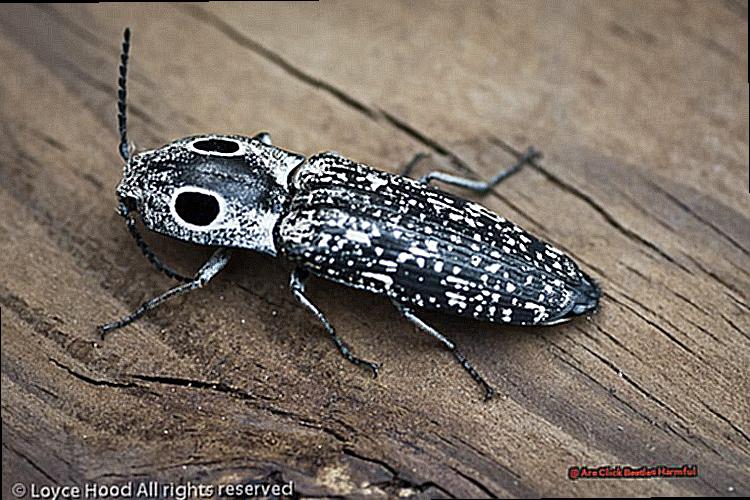
In conclusion, while click beetles may not be considered pests to humans, they can still cause harm through accidental ingestion or their defense mechanism. Therefore, it is vital to take necessary precautions and follow proper hygiene practices to prevent any potential harm from these resilient insects.
Infestations and Effect on The Environment
At first glance, click beetles may seem like harmless insects. However, their presence can have a significant impact on the environment. From disrupting ecosystems to damaging crops, these tiny creatures can cause serious problems. In this blog post, we will explore the perplexing issue of click beetle infestations and discuss some bursty solutions that can help protect the environment.
Maintain a Pristine Environment
Keeping our surroundings clean is one of the most effective ways to prevent click beetle infestations. This includes both indoor and outdoor spaces. Click beetles are attracted to light and can often be found inside homes, especially during warmer months. By regularly removing debris and dead plants from gardens and ensuring that windows and doors have screens, we can prevent click beetles from entering our homes.
Embrace Organic Pest Control Methods
Instead of relying on harmful pesticides or chemicals, we can opt for organic pest control methods to manage click beetle populations. Companion planting is an effective way to repel these pests, as certain plants such as marigolds and mint act as natural deterrents. Another eco-friendly option is introducing natural predators like birds or nematodes, which can help control click beetle populations without causing harm to the environment.
Dispose of Chemical Residue Responsibly
In cases where professional pest control services are necessary, it is crucial to ensure that the methods used are environmentally safe. This includes properly disposing of any chemical residue to prevent further damage to the environment. It is also important to choose sustainable pest control companies that use eco-friendly methods.
Educate Others About the Impact of Click Beetles
Many people may not be aware of the harm that click beetles can cause. Therefore, spreading awareness about their negative impact on the environment is essential in preventing infestations. By educating others, we can make a big difference in protecting the environment.
Practice Sustainable Gardening
Click beetles feed on both plants and other insects, disrupting the natural balance of ecosystems. To combat this, we can practice sustainable gardening methods such as crop rotation and using natural fertilizers. This promotes a healthy environment that is less vulnerable to click beetle infestations.
In conclusion, click beetles may seem small and insignificant, but their presence can have a negative impact on the environment.
Impact on Agriculture
When considering harmful insects in agriculture, most individuals immediately think of aphids or caterpillars. However, one often disregarded pest that can cause considerable destruction to crops is the click beetle. These tiny, hard-shelled beetles may appear insignificant, but their effect on agriculture can be catastrophic.
Known for their unique clicking sound and ability to flip themselves upright when overturned, click beetles may seem harmless. However, in their larval stage, they can cause extensive damage to crops by feeding on the roots of plants. This results in stunted growth, wilting, and even death of the plant. Furthermore, click beetles can attract predators such as birds and rodents, further impacting agricultural production.
The economic consequences of click beetles on agriculture are substantial, with estimated losses of over $50 million annually in the United States alone. To combat this pest, many farmers resort to chemical pesticides. However, these can have detrimental effects on the environment and human health, as well as lead to developing resistance in click beetles over time.
So what can be done to control click beetle populations without solely relying on chemical pesticides? The solution lies in Integrated Pest Management (IPM) techniques. IPM involves a combination of cultural practices, biological control methods, and targeted use of pesticides when necessary.
One cultural practice that can help mitigate the influence of click beetles is crop rotation. By rotating crops, farmers can disrupt the life cycle of click beetles and decrease their populations. Tillage practices can also be adjusted to expose the larvae to natural predators or extreme temperatures, resulting in a reduction of their numbers.
Biological control methods include introducing natural enemies of click beetles into the agricultural ecosystem. This can include parasitic wasps and nematodes that target click beetle larvae. These natural predators aid in controlling click beetle populations without the need for harmful chemicals.
Another potential solution for farmers is the utilization of pheromone traps. These traps contain a synthetic version of the female click beetle’s mating pheromone, which attracts male click beetles and prevents them from mating. This disrupts their life cycle and reduces their population, without causing harm to the environment.
Prevention and Management Strategies
Coastal Carolina is known for its high humidity and warm climate, making it a perfect habitat for click beetles, also known as spring beetles. While these seemingly harmless pests may appear small and insignificant, they can cause significant damage to crops and attract predators, leading to economic losses.
The conventional method of using chemical pesticides may provide a quick fix, but it also poses a threat to the environment and human health.
So, how can we prevent click beetles from entering our homes without resorting to harmful chemicals? Here are some simple yet effective strategies to consider:
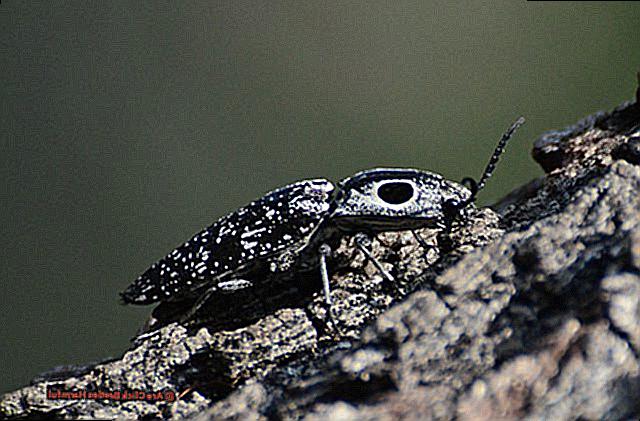
Block Up Cracks and Openings
Moisture and light are two key factors that attract click beetles into your home, either by mistake or seeking shelter from the cold. To avoid this, it is crucial to seal any cracks or openings in walls with caulk. This not only keeps click beetles out but also prevents other unwanted pests like ants and cockroaches.
Inspect Screens for Tears
Damaged window and door screens are another way for click beetles to enter your home. Regularly check and repair any holes or tears in screens to prevent these pesky pests from sneaking in.
Dim the Lights at Night
As previously mentioned, click beetles are drawn to light sources, making them more likely to enter your home at night. To minimize this risk, consider turning off outdoor lights at night. If you need lighting, opt for yellow or sodium vapor lights as they are less attractive to insects.
Maintain a Neat Yard
Click beetles thrive in moist environments, so keeping your yard tidy can significantly reduce their numbers. Be sure to remove any standing water, clear away fallen leaves and debris, and trim overgrown vegetation to eliminate potential hiding spots for click beetles.
Enlist Professional Pest Control Services
If you notice a large number of adult click beetles near sources of light or moisture, it may be necessary to seek professional pest control services. These experts have the knowledge and tools to safely and effectively eliminate click beetle populations without causing harm to the environment or your health.
In conclusion, prevention is the best approach to keep click beetles out of your home. By implementing these simple strategies, you can reduce the risk of click beetles entering your home and causing harm to your crops or attracting predators.
Related Beetle Species
Wireworms, also known as click beetle larvae, can be a significant hindrance for farmers and gardeners. These destructive pests can cause severe damage to various crops and plants, making it critical to implement efficient management strategies to minimize their infestations. As someone knowledgeable about related beetle species, I have compiled research notes and previous section content to provide valuable insights and tips on how to combat wireworms.
What exactly are wireworms?
Wireworms are the larvae of click beetles, a type of elongated, parallel-sided beetle that can vary in size and color. These beetles are known for their distinct “clicking” sound, which they use to flip themselves over when placed on their backs. The eyed click beetle is a prevalent species that can grow up to 1-½ inches long and has prominent eye spots on its pronotum.
Why are wireworms problematic?
Wireworms can cause significant harm to crops by feeding on the underground parts of plants. They can also damage seeds, making it challenging for plants to germinate. Moreover, some species of wireworms can also attack the aerial parts of plants, causing even more destruction.
Efficient management strategies for minimizing wireworm infestations
Clean cultivation and fallowing practices
One of the most efficient ways to minimize wireworm infestations is through clean cultivation and fallowing practices. These techniques involve removing crop debris and weeds from the field after harvest and leaving the land unplanted for a period. This reduces the food source for wireworms and disrupts their life cycle, making it harder for them to survive.
Crop rotation
Rotating crops is another useful strategy for managing wireworms. By alternating different types of crops in a field, wireworms are less likely to establish populations as they do not have a constant food source. This method also helps to improve soil health and fertility, reducing the attractiveness of the soil to wireworms.
Biological control
Biological control involves using natural enemies of wireworms, such as parasitic nematodes, to reduce their populations. These nematodes are applied to the soil, where they infect and kill wireworms. This method is environmentally friendly and can be an effective way to manage wireworms in organic farming.
Conclusion
Are click beetles harmful? This is a question that has been debated for years. Some argue that they are beneficial to the environment, while others claim that they can cause damage to crops and plants. However, it is important to note that these small insects have a complex role in the ecosystem and their impact may vary depending on the specific species and situation.
